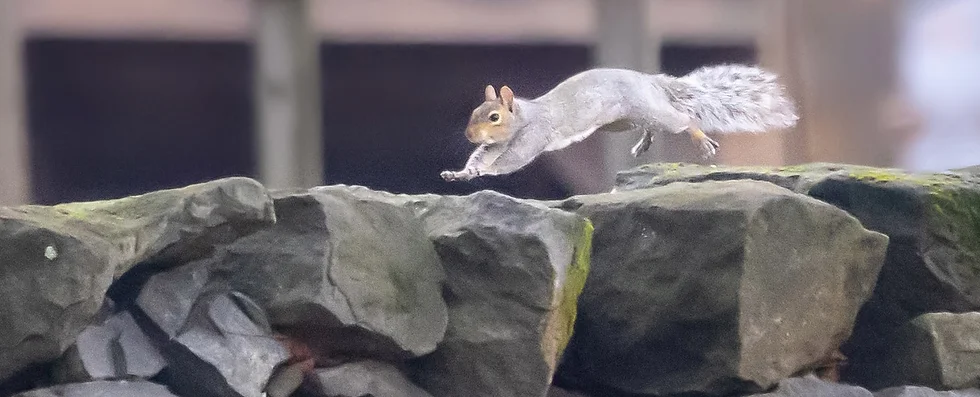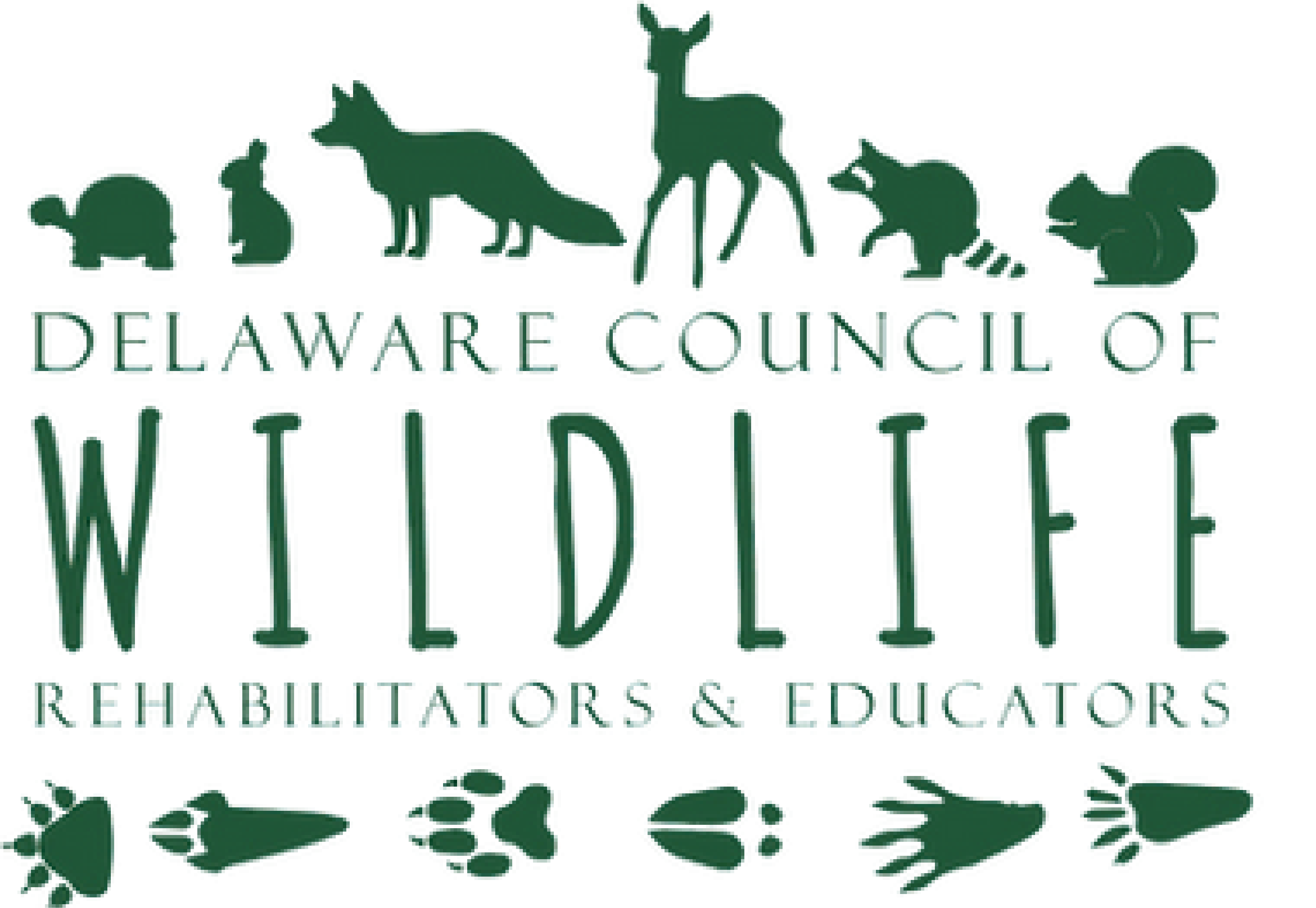
Eastern Gray Squirrel (Sciurus carolinensis)
Rodent Family
Physical characteristics:
Gray/Brown/Black/White
Dark Claws – very sharp for climbing
Bushy Tail (used to keep warm and protect from sunlight
16-20 inches from nose to base of tail
1.5-2 pounds as an adult
Rehab Criteria: A squirrel who is nearly full-sized, has a full and fluffy tail and can run, jump and climb is independent. However, if a juvenile squirrel continuously approaches and follows people, their mom is probably gone. In this case, you should contact us because the baby is very hungry and needs care.
There are a few cases where you might need to intervene:
- A baby squirrel falls from a nest.
- A nest falls from a tree.
- A felled tree contains an intact nest.
If the baby and/or their nest fell from the tree today, give the mother squirrel a chance to reclaim their young and relocate them to a new nest. If the baby is uninjured, leave them where they are, leave the area, keep people and pets away and monitor them from a safe distance. If it’s chilly outside or the baby isn’t fully furred, place them in a shoebox with something warm underneath (like a hot water bottle tucked inside a sock). Be sure to put a flannel shirt between the baby and the heating device, or they could overheat. Do not cover them with anything or the mother might not be able to find them.
If the babies are not retrieved by dusk, take these steps:
- Wearing thick gloves, gather the squirrels and place them inside a thick, soft cloth, such as a cloth diaper or fleece scarf or hat.
- Place one of the following items beneath the cloth: A chemical hand warmer inside a sock, a hot water bottle (replace the hot water every 30 minutes) or a heating pad set on the lowest setting. (If the heating pad has no cover, put it inside two pillowcases so the babies don’t overheat.)
- Place the baby squirrels, cloth and warmer inside a small cardboard box or carrier.
- Contact us for assistance.
When rescuing small wild animals, it’s a good idea to wear gloves. Be aware, however, that gloves provide only a small amount of protection, and that most mammals can easily bite through them. Raccoons, skunks, bats and some foxes are more likely than other mammals to carry rabies, but any wild animal may carry the disease. There are a number of other serious or fatal diseases that can be transmitted to humans, so you must take care that the animal doesn’t bite you.
Lifespan: Documented up to 12 years in the wild, but average is 3-4 years (predators and human hazards)
Habitat: Lives in forests, urban parks, and neighborhoods with mixed coniferous/hardwood trees. Nests in tree cavities (more permanent) or branch/leaf mass in the fork of branches (dray) at least 20 feet off the ground
Diet: Omnivore- Nuts, berries, buds, fruit, fungi, roots, insects, bird eggs, frogs, farm crops, bird seed
Family life: Gives birth twice a year: early spring and late summer. Usually 3-5 blind and naked offspring per litter. Babies are weaned between 10-12 weeks and stay in family groups for 4-5 months.
Predators: Foxes, coyotes, raptors, bobcats, snakes (babies) Other significant threats: cats, dogs, humans
Special considerations/Interesting facts: They store nuts in a cache to eat throughout the winter. They are very vocal and use their voice as well as their tail to communicate with other squirrels. They usually have a back-up nest available in case the dray is damaged from weather or overburdened with parasites (fleas). They are usually solitary creatures but will share a dray during the winter for body heat. They are active during the day. They sleep more during the winter months to conserve energy. Approximately 15% of the nuts they bury are not recovered by the squirrel so they can be thanked for assisting to plant trees throughout their territory. Their tail is used for balance, heat/warmth, an umbrella, communication, and as a rudder when swimming.
